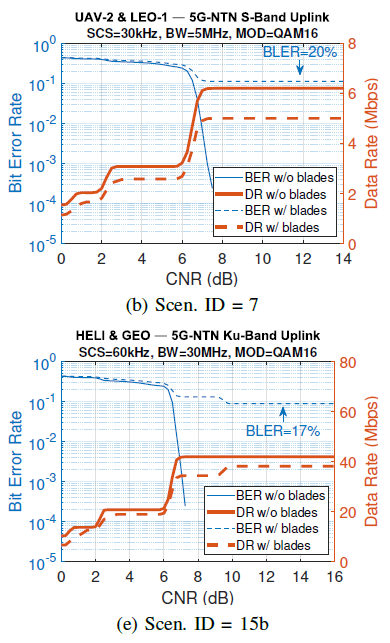
Satellite Communications (SatCom) are a backbone of worldwide development. In contrast with the past, when the GEO satellites were the only means for such connectivity, nowadays the multi-orbital connectivity is emerging, especially with the use of satellite constellations. Simultaneously, SatCom enabled the so-called In-Flight Connectivity, while with the advent of 5G-NTN, the devel opment of this market is being accelerated. However, there are still various missing points before such a technology becomes mainstream, especially in the case of Rotary Wing Aircraft (RWA). Indeed, due to their particular characteristics, such as the low altitude flights and the blade interference, there are still open challenges. In this work, an End-to-End (E2E) analysis for the performance of SatCom under 5G-NTN for manned and unmanned RWA is performed. Various scenarios are examined, and related requirements are shown. The effects of blades and other characteristics of the RWA are established, and simulations for these cases are developed. Results along with related discussion are presented, while future directions for development are suggested. This work is part of the ESA ACROSS-AIR project.
- Vasileios Leon, Ilias Christofilos, Athanasios Nesiadis, Iosif Paraskevas, Juan Perrela, Georgios Ioannopoulos, Alexandros Tasoulis–Nonikas, Mathieu Bernou, Jacques Reading
- IEEE International Workshop on Computer-Aided Modeling and Design of Communication Links and Networks (CAMAD) 2024
- Read More

Extreme-edge computers coupled with sophisticated remote sensors are becoming a pivotal component for Earth Observation (EO) satellites. Such components benefit from the employment of virtualization techniques to enable the dynamic deployment of novel on-board Artificial Intelligence (AI) and to concurrently support multiple users on the same platform. This paper presents a comparative analysis of state-of-the-art virtualization techniques (namely Unikernels, Virtual Machines and Containers) specifically within the realm of AI-driven EO. Focused on five key criteria – security, scalability, resource efficiency, performance, and multitenancy – the study synthesizes existing literature to elucidate the strengths and limitations of each virtualization technology, and augments this understanding through a hands-on evaluation. Unikernels are distinguished for their minimalistic design and high efficiency, virtual machines for their robust isolation and stability, and ontainers for their flexibility. The comparative framework aims to guide engineers in selecting the most suitable virtualization technology according to the needs of their use case. This analysis clarifies the current state of virtualization technologies and provides a nuanced understanding of their applicability in advancing the capabilities of AI-driven EO systems.
- Antonis Karteris, Evgenios Tsigkanos, Mathieu Bernou, Alexis Chatzistylianos, George Lentaris
- 2024 IEEE International Geoscience and Remote Sensing Symposium (IGARSS)
- Read More
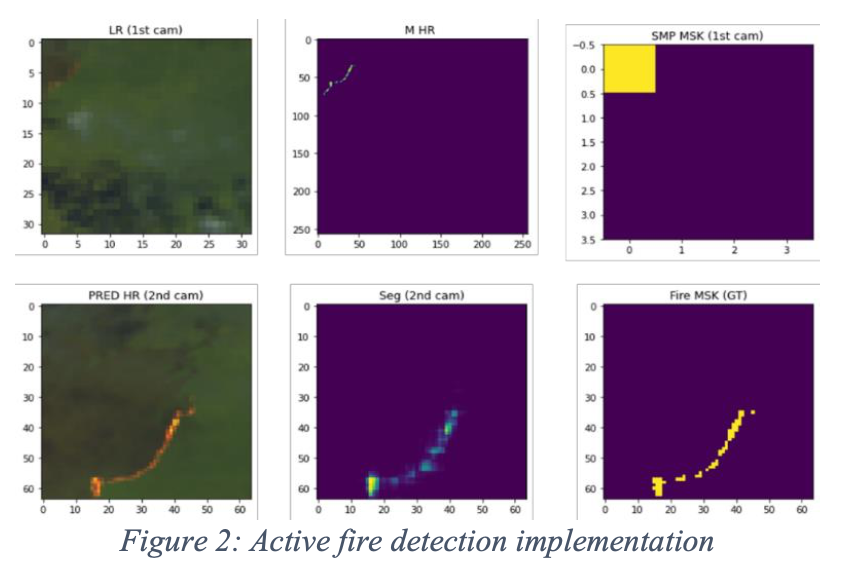
Given a mission profile, using very similar components but different configurations can allow an Earth Observation satellite to acquire large swath observations, offering very high revisit frequencies, at the expense of lower spatial resolution or vice versa. In the feasibility study summarized herein, the objective is to have a wide-swath optical camera for the maximization of the coverage, combined with a high-resolution, narrow-swath camera to achieve the highest required spatial resolution and get the best possible image of an Area-of-Interest (AoI), with the help of on-board AI decision making. The performed analysis concludes with a case study demonstration on active fire detection.
- Simon Vellas, Mathieu Bernou, Grigorios Tsagkatakis, Nikolaos Nikolopoulos, Panagiotis Tsakalides
- European Data Handling & Data Processing Conference (EDHPC) 2023
- Read More
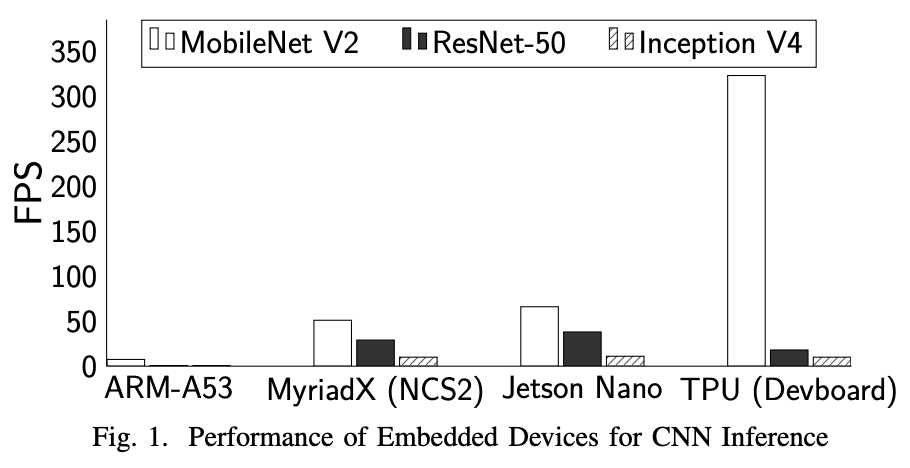
The success of AI/ML in terrestrial applications and the commercialization of space are now paving the way for the advent of AI/ML in satellites. However, the limited processing power of classical onboard processors drives the community towards extending the use of FPGAs in space with both rad-hard and Commercial Off-The-Shelf devices. The increased performance of FPGAs can be complemented with VPU or TPU ASIP coprocessors to further facilitate high-level AI development and inflight reconfiguration. Thus, selecting the most suitable devices and designing the most efficient avionics architecture becomes crucial for the success of novel space missions. The current work presents industrial trends, comparative studies with inhouse benchmarking, as well as architectural designs utilizing FPGAs and AI accelerators towards enabling AI/ML in future space missions.
- Vasileios Leon, George Lentaris, Dimitrios Soudris, Simon Vellas, Mathieu Bernou
- IFIP/IEEE 30th International Conference on Very Large Scale Integration (VLSI-SoC) 2022
- Read More
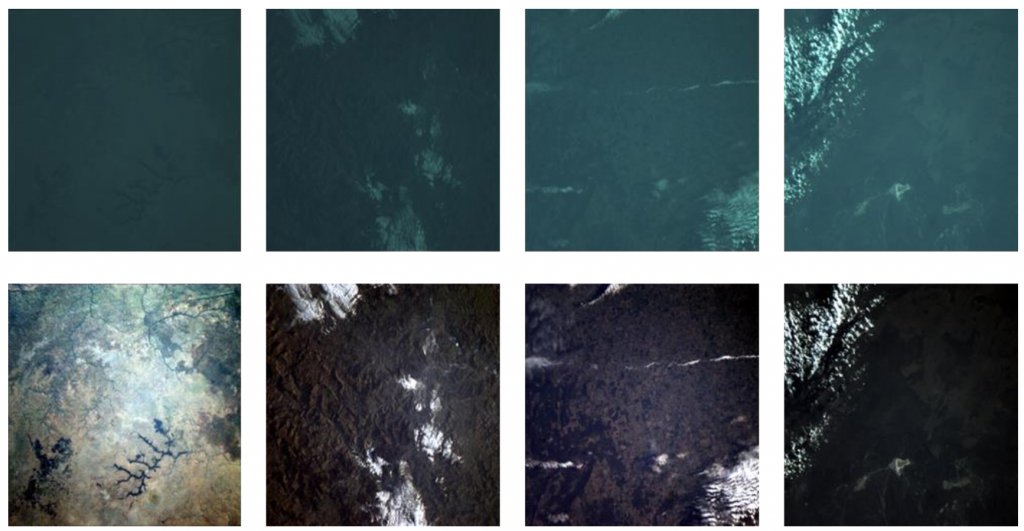
Technology miniaturization is a key driver for the next generation of EO platforms utilizing CubeSats, which promises a radical departure from the established paradigm in terms of design and development cost and time, as well as reduced complexity and higher flexibility deployment processes. CubeSats have the potential to revolutionize Earth Observation by exploring different operating points in terms of spatial, temporal, and spectral resolution. While physical limitations, mostly in terms of component size and weight, prevent them from obtaining high-quality imagery, technology miniaturization has allowed such platforms to support impressive capabilities and flexibility in terms of hardware and software. One very promising aspect of these capabilities is that even low-cost imaging sensors can acquire relatively low spatial quality but high temporal sampling frequency image sequences, i.e., videos. Furthermore, the advent of flash memory has allowed a dramatic increase in onboard memory. Lastly, system designers can leverage flexible software/hardware designs, for deploying state-of-the-art machine learning systems like deep neural networks offering promising capabilities. On the other side, the increase in space-to-ground communications capabilities has been moving at a much slower pace, leading to scenarios where observations are discarded due to bandwidth limitations. In this work, we study how one can leverage the capabilities of CubeSats, and the ESA OPS-SAT platform, in particular, to effectively fuse sequences of low-resolution images into a higher resolution one and transmit the generated images instead of the unprocessed ones. By generating a single high-resolution image, different operating points can be explored in terms of the number of frames and spatial resolution. We consider the analysis of scenarios where this process leads to compression of the observations, while at the same time, providing higher quality images. We formulate the problem as an instance of Multi-Frame Super Resolution (MFSR) where we explore the ability of the onboard HD camera, to acquire multiple frames, i.e., short video or burst sequences, from the same (approximately) ground location and utilize these frames for increasing spatial resolution, by effectively fusing multiple Low Resolution (LR) images into a single High-Resolution (HR) one. To achieve this objective, we consider deep neural networks operating on registered image sequences which can be deployed onboard the satellite. It is worth noting that one could consider applying this paradigm on the ground, and indeed, the ESA Kelvin competition exploits the ability of PROBA-V to acquire images with different resolutions, to do just that. Despite the potential, this OBPDC 2022approach mandates the transfer from the S/C to the G/S and finally to the end-user, a large amount of redundant, low- quality content. This can introduce a bottleneck to space-to-ground communication channels
- Grigorios Tsagkatakis, Simon Vellas, Sam Bammens, Vladimir Zelenevskiy, David Evans, Mathieu Bernou, Panagiotis Tsakalides
- 8th International Workshop on On-Board Payload Data Compression (OBPDC 2022)
- Read More
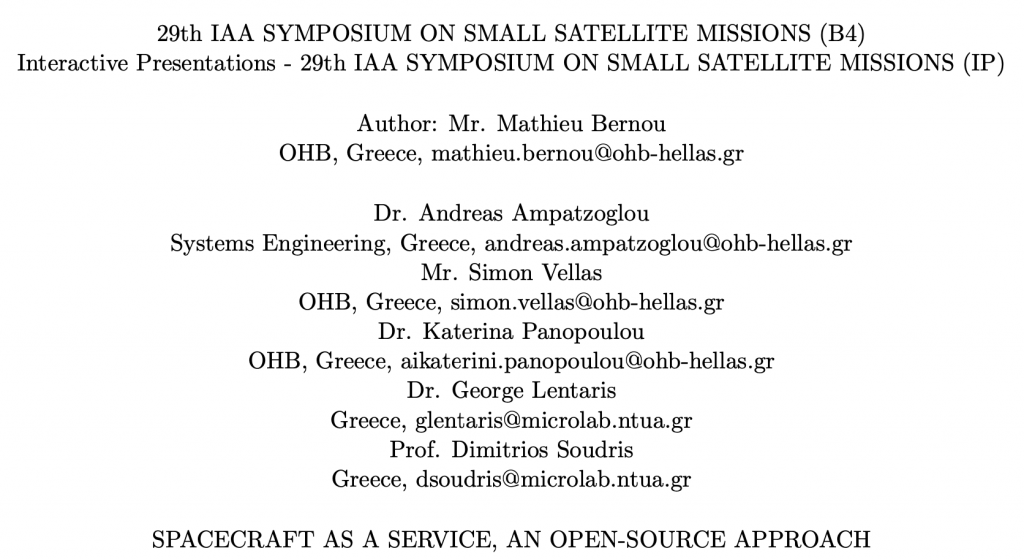
In recent years, there has been a constant and continuous effort in the EU to reduce the System Response Time of EO satellites in order to achieve rapid response in time critical EO domains, such as border control, search and rescue and marine environment protection. High-performance computation power on board the satellite is essential for reducing significantly the response-time for such applications via the extraction of the information directly in orbit. The major technical challenges for this goal are the development of high-performance space avionics for edge computing that can provide enhanced in-flight reconfigurability, the integration of this technology into suitable satellite platforms, the virtualization of the hardware and the development of a very heterogeneous cloud computing architecture that can combine ground clusters and remote satellite computers as part of the same network.
OHB Hellas, the Greek subsidiary of the space high-tech group OHB SE, proposes an innovative community-based online web service, as solution, that connects satellite owners and EO users by utilizing onboard reconfigurable HW/SW, cloud services, and open-source tools. The proposed idea cultivates the culture of sharing-economy for satellite owners and maximizes the use of resources in-orbit. The users will be able, through a web portal, to upload payload data processing software, download their missions’ results and monitor the satellites hosting their idea/service. This web portal will give the notion to the user that is directly communicating with the satellites, while in fact, the software will pass through the web portal, to the mission control / ground station to be finally transmitted to the satellite(s) and vice versa. The technologies enabling the proposed satellite as a service concept are high performance data processing and the software layer for the hardware virtualisation. By progressively building a constellation of different
remote sensing spacecrafts with different capabilities, and matching that with an appropriately flexible ground processing system, a number of services can be achieved over time allowing mission flexibility and quick adaptability to emerging needs. OHB intends to bring its rich heritage in delivering complex, robust and highly reliable space solutions for this purpose targeting in the near future small satellite platforms. OHB proposes to start the implementation of the service in Greece, initially in the domain of EO, aiming to expand in the near future to other domains that would require intelligent automation like Space exploration or connectivity.
- Mathieu Bernou, Andreas Ampatzoglou, Simon Vellas, Katerina Panopoulou, George Lentaris, Dimitrios Soudris
- 29th IAA Symposium on Small Satellite Missions 2022
- Read More
